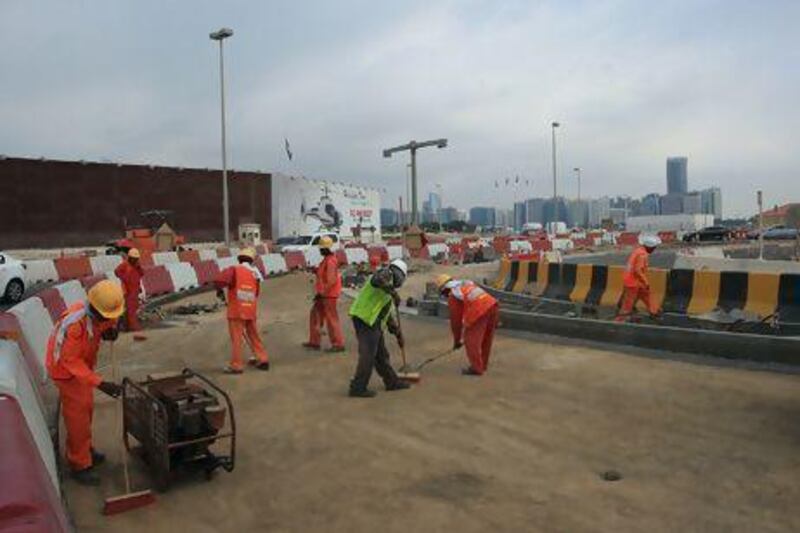The days of elevated public spending in the GCC may be numbered, say economists, as governments begin to wake up to an era of fiscal constraints and a changing oil market.
Half of the GCC - Saudi Arabia, Oman and Bahrain - is forecast to be posting budget deficits by 2015. The surpluses of the other half - UAE, Qatar and Kuwait - are expected to be increasingly squeezed.
The worsening fiscal position is a reflection of an anticipated drift in oil prices in the next two years as demand growth wanes. Beyond that, the gradual ramp-up in the US shale gas revolution will further soften demand, say analysts.
"Budgets will start to be less profligate and big increases in the past will not be followed through," said Neil Shearing, the chief emerging markets economist at Capital Economics.
The likely trigger of the gradual belt-tightening has been the rapid increase in break-even oil prices, the level governments require oil prices to be to balance their budgets.
The UAE's break-even price, for example, reached US$74 per barrel last year, up from $23 in 2008, estimates the IMF. It's a similar upwards trend elsewhere.
Capital Economics forecasts oil prices to edge down to about $85 per barrel by the end of 2015, a trend likely to mean fiscal positions could "worsen substantially" across the GCC, it says. Brent crude was trading at about $108 a barrel on Friday.
For years, GCC economies have been motored by huge spending splurges by governments. Such expenditure reached an apex after the global financial crisis in 2009 and the Arab Spring in 2011 as several states beefed up spending on infrastructure and wages and unemployment benefits. Saudi Arabia's spending as a percentage of GDP rose from 40 per cent in 2003 to 65 per cent last year.
Some members of the GCC have already begun to take a more conservative budgeting approach. The UAE started last year, more than doubling its total fiscal surplus, and Saudi Arabia has taken similar steps this year.
Referring to the US shale gas revolution, James Reeve, the assistant general manager and deputy chief economist of Samba Financial Group, said Saudi Arabia's government was aware that there were "new constraints in play".
"It's the start of an era of more mindful spending," he said. "There has been a sharp slowdown in project spending this year and people are wondering whether it's part of strategic thinking or a reflection of the bureaucratic process. It's probably a bit of both. There has been some upheaval in the government but also there's a recognition what with a break-even at $87 and oil prices hovering around $100 they need to change tack and allow some of the investments of recent years to bed in."
Saudi Arabia would post a deficit of 1.3 per cent of GDP in 2015, estimates Samba.
Bahrain, the state with the smallest economy and oil reserves, has been posting a deficit every year since 2009. It is likely to be joined this year by Oman, which will post a deficit of 1.4 per cent of GDP this year, estimates Emirates NBD. In a sign of the pressures facing Oman, the IMF last month warned it needed to contain state spending and raise non-oil revenue to keep its fiscal balance sustainable.
Still, deficits do not necessarily spell sudden doom and gloom. With low levels of sovereign debt relative to other emerging markets, the GCC has room to raise money in financial markets. The members' countries also have large foreign currency reserves to fall back on in tough times.
But one of the dilemmas facing the GCC is how closely interlocked overall GDP growth is to public spending. Smaller capital spending runs the risk of hijacking efforts to diversify the economy.
Saudi Arabia would experience a deceleration in non-oil GDP growth from an estimated 4.8 per cent this year to 3.5 per cent in 2015, estimates Samba.
Kuwait's outlook is even more uncertain. Despite a relatively low break-even price of $56 a barrel this year, the economy faces the prospect of stagnating.
"They need to spend more to diversify their economy or they risk being left behind," said Giyas Gokkent, the chief economist of National Bank of Abu Dhabi.
Qatar had leapfrogged Kuwait in terms of size of nominal GDP between 2009 and this year, said Mr Gokkent.





